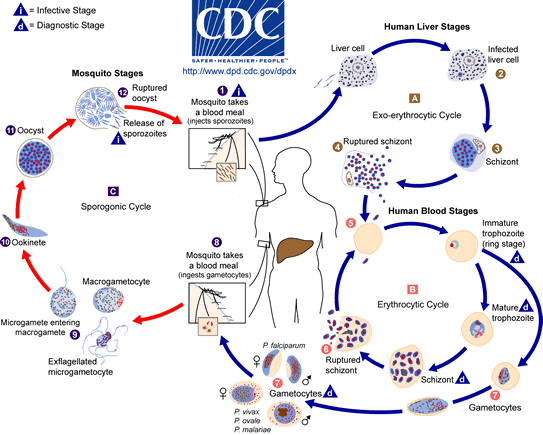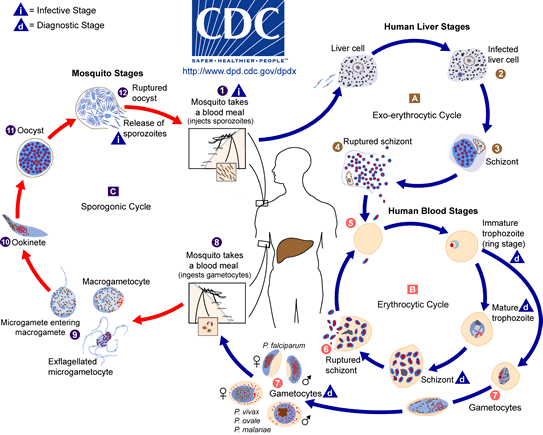QUESTION
What is the life cycle of malaria?
ANSWER
Malaria is caused by a single celled organism in the genus Plasmodium. Five species of Plasmodium infect humans, but all follow a very similar life cycle, including two separate cycles of asexual reproduction in the human host (one in the liver, called the exo-erythrocytic cycle, and one in the blood, and specifically inside red blood cells, known as the erythrocytic cycle) and a sexual reproductive stage inside the mosquito definitive host (usually called the “vector”). A schematic of the full life cycle is below, courtesy of the CDC (www.cdc.gov).

